Vaser-Liposuction in Johannesburg
Search and Compare the Best Clinics and Doctors at the Lowest Prices for Vaser-Liposuction in Johannesburg
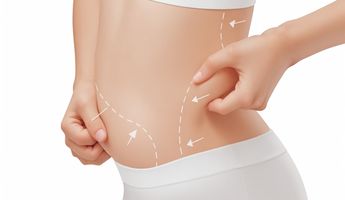
Find the best clinics for Vaser-Liposuction in Johannesburg
No pricing info available
Thailand offers the best prices Worldwide
Price: $ 236
From 38 verified reviews
Nompumelelo Madliwa, 19 April 2020
I had such a wonderful experience there with Dr Thomas, I had a skin drafting done it was such a smooth process I am healing very well and had a great stay there, Thank you so much
- Home
- South Africa
- Johannesburg
Compare Before & After Photos of _procedure_photos.phpVaser-Liposuction

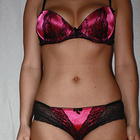
Front view


Half-side view
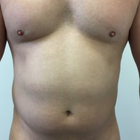

Front view
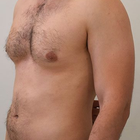
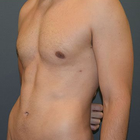
Half-side view
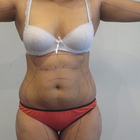

Front view
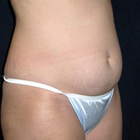
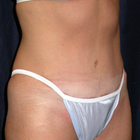
Half-side view
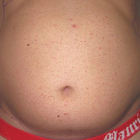

Front view
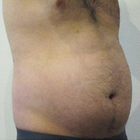
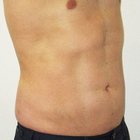
Half-side view
WHY US?
At Medijump, we're making medical easy. You can search, compare, discuss, and book your medical all in one place. We open the door to the best medical providers worldwide, saving you time and energy along the way, and it's all for FREE, no hidden fees, and no price markups guaranteed. So what are you waiting for?

Free

Best Price

Widest Selection

Risk-Free
What you need to know about Vaser-Liposuction in Johannesburg
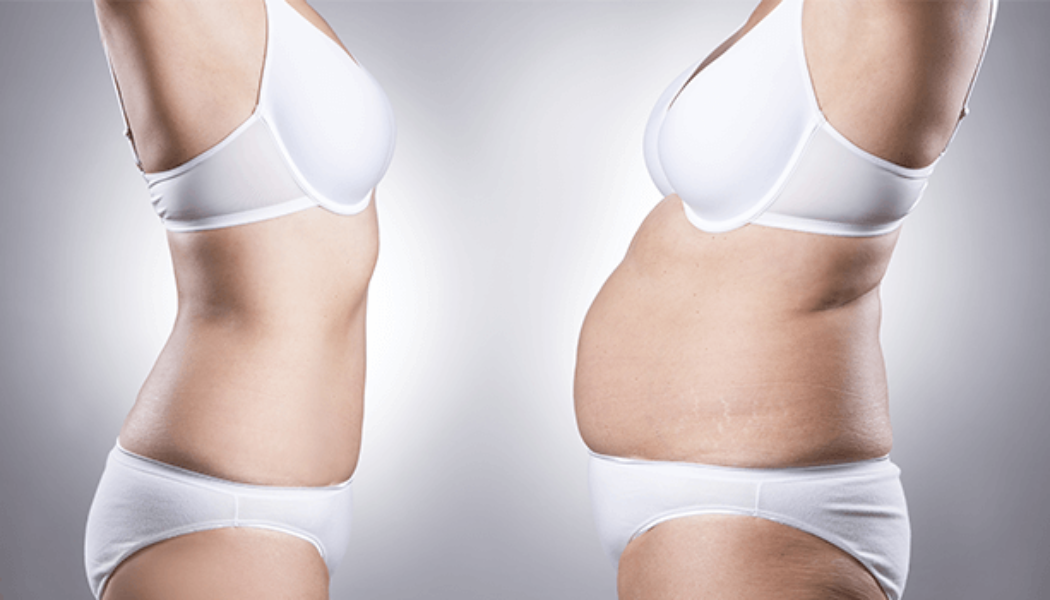
Vaser liposuction, also referred to as Vaser Lipo for short, is a type of cosmetic treatment performed to change the contours and shape of the body by eliminating stubborn fat deposits. Vaser stands for Vibration Amplification of Sound Energy Resonance, which is a specialized ultrasound technology that sends out ultrasonic frequency waves to break down fat cells from desired areas of the patient. Once the fat cells have been broken down, the surgeon can perform the liposuction part of the procedure, which is removing excess fat through a suction process.
Vaser Liposuction has become increasingly popular because the specialized ultrasound technology increases the accuracy of the procedure and minimizes damage to the surrounding tissue, which results in less bruising and pain compared to traditional liposuction. Also, since the fat cells are specifically targeted, the result is much more sculpted and smoother than traditional liposuction. Vaser Liposuction can be performed in many areas of the body, including the abdomen, back, arms, flanks, neck, thighs, calves, ankles, hips, buttocks, and under the chin.
Like other liposuction techniques, it is important to note that Vaser Liposuction is not a weight loss solution. The procedure is intended to contour the body, reduce stubborn excess fat, and reveal muscle tone underneath the fat. You must already be healthy and within your target weight before you consider undergoing this procedure. It
What does a Vaser-Liposuction Procedure Involve?
To begin the procedure, your surgeon injects a saline-anesthetic solution mixture or tumescent solution directly into treatment areas. This solution is used to expand the fat compartment and tightens small blood vessels. It also helps to start the breakdown of the fat cells and protects other tissues. Tiny incisions are then created in the targeted area to insert the Vaser ultrasonic probes. The vibration from the ultrasound will break down the fat. Once the fat is broken down, your surgeon will use a small cannula to remove the fat cells and liquid. Because the fat is broken down with the ultrasound, the fat extraction with the liposuction cannula is easier and less traumatic than in traditional liposuction.
Vaser Liposuction can be carried out under local anesthetic with minimal oral sedation, general anesthetic, or intravenous sedation. If the procedure is performed under local anesthesia, you may feel slight pinching and pressure when the liposuction part is performed.
How Long Should I Stay in Johannesburg for a Vaser-Liposuction Procedure?
Vaser Liposuction takes around 2 to 5 hours to complete. After the procedure, you may have to stay in the hospital overnight if general anesthesia is used. However, if local anesthesia is used you should be able to leave the hospital on the same day once the effects of the anesthetic wear off.
Since your surgeon will schedule follow-up appointments to monitor your healing and remove your stitches, you may need to stay in Johannesburg for several days following the surgery. The recommended length of stay in the country is about three to seven days.
What's the Recovery Time for Vaser-Liposuction Procedures in Johannesburg?
The recovery period of Vaser Liposuction is typically short, but it depends on your general health and treated area. In general, you should be able to return to work and most of your daily activities within two to seven days. You also need to refrain from exercise or other forms of strenuous activities for about 2 weeks. However, if you have gone through a more extensive procedure, you need to prepare for a longer recovery period. The overall recovery time may take up to 24 days following the Vaser Liposuction.
What sort of Aftercare is Required for Vaser-Liposuction Procedures in Johannesburg?
Your surgeon will give you specific post-operative instruction. You must follow all the instructions closely to help you heal quickly and smoothly, as well as to avoid any possible complications. It is important that you rest as much as possible during the first few days. You may feel some pain and discomfort, but your surgeon will prescribe pain medication to help manage the discomfort.
It is important that you maintain a healthy lifestyle by following a healthy diet and exercising regularly to keep the results of your Vaser Liposuction. While mild weight fluctuations will go unnoticed, significant weight gain will become noticeable. Therefore, have a well-balanced diet, avoid too many sweets, and stay away from fast food.
What's the Success Rate of Vaser-Liposuction Procedures in Johannesburg?
Approximately 90% of women and men who have gone through Vaser Liposuction reported having achieved their target. The results of the procedure may be seen immediately, but the most significant improvement will appear in 6 to 8 weeks following the procedure. It may take about 6 months to achieve the final results.
Again, your new look will only remain if you take care of yourself. The results will not be permanent if you do not stick to an active and healthy lifestyle. The procedure is designed to give you a little boost and to get rid of persistent fat that you cannot remove easily through a healthy diet and exercise.
While risks and side effects of Vaser Liposuction rarely occur, it is best that you are aware of them. The risks and side effects are:
- The ultrasound device may burn your skin and tissues.
- Skin discolorations.
- Skin from the affected area may be wavy, dimpled, or saggy.
- The formation of scar tissue.
- Swelling.
- The remaining fat cells can expand.
- To further minimize the risks, make sure you choose a skilled and experienced surgeon.
Are there Alternatives to Vaser-Liposuction Procedures in Johannesburg?
If you do not want to undergo Vaser Liposuction or you are not an ideal candidate for the procedure, you can opt for the nonsurgical alternatives:
- CoolSculpting works by freezing stubborn fat cells in certain areas of the body. The freezing temperature can destroy fat cells permanently. This type of procedure can remove fat cells from certain areas of the body, particularly belly fat, back fat, love handles, arm fat, or a double chin.
- Sculpsure uses a laser beam to heat fat cells until they become irreversibly damaged. This procedure is very quick and requires almost no downtime.
Whilst the information presented here has been accurately sourced and verified by a medical professional for its accuracy, it is still advised to consult with your doctor before pursuing a medical treatment at one of the listed medical providers
No Time?
Tell us what you're looking for and we'll reachout to the top clinics all at once
Enquire Now

Popular Procedures in Johannesburg
Prices Start From $111

Prices Start From $120

Prices Start From $931

Prices Start From $76

Recommended Medical Centers in Johannesburg for Vaser-Liposuction

- Interpreter services
- Translation service
- Religious facilities
- Medical records transfer
- Medical travel insurance
- Health insurance coordination
- TV in the room
- Safe in the room
- Phone in the room
- Private rooms for patients available

- Interpreter services
- Translation service
- Religious facilities
- Medical records transfer
- Medical travel insurance
- Health insurance coordination
- TV in the room
- Safe in the room
- Phone in the room
- Private rooms for patients available

- Interpreter services
- Translation service
- Religious facilities
- Medical records transfer
- Medical travel insurance
- Health insurance coordination
- TV in the room
- Safe in the room
- Phone in the room
- Private rooms for patients available

- Interpreter services
- Translation service
- Religious facilities
- Medical records transfer
- Medical travel insurance
- Health insurance coordination
- TV in the room
- Safe in the room
- Phone in the room
- Private rooms for patients available
Vaser-Liposuction in and around Johannesburg
About Johannesburg
Johannesburg is the most populous as well as the largest city in South Africa. There is a lot to see and do in Johannesburg. Home to the Apartheid Museum, it is the perfect place for anyone who loves history and wants to learn more about the country’s past. There are also MOAD and MuseuMAfriCA that exhibit the city’s art and history. Other than the museums, the metropolitan city has a number of other things to do, such as enjoying Gold Reef City, shopping in its many markets, and visiting The Cradle of Human Kind.
Today, people have found a new reason to visit Johannesburg: medical tourism. Although it is not as widely known as other medical tourism destinations in other parts of the world, the city has seen a steady rise in medical tourists. The urban city features public and private medical centers with the highest standards, well-trained medical practitioners, and cutting-edge technology. Most of the medical centers have English speaking doctors, nurses, and staff, so there is no language barrier for foreign medical tourists. Plastic surgery, particularly tummy tuck, is one of the more popular procedures since it is much cheaper here than in Western countries.
Popular Areas in Johannesburg
While Johannesburg is not a popular tourist destination, there are a number of things to see and do in the city. The city is mostly known as Nelson Mandela’s home and has an array of astonishing museums. Those who love history and want to learn about the country’s struggle will enjoy the Apartheid Museum. It exhibits the story of apartheid through photographs, film footage, clippings, newspaper, and artifacts. Mandela House in Soweto Street is also worth a visit. It was once Nelson Mandela’s home. The museum showcases photographs, paintings, as well as awards and recognitions earned by Nelson Mandela.
One of the most popular places is the Lion Park. The safari park offers an amazing chance to watch lions and several other animals up close. There are also other activities such as animal interactions and hand-feeding a few animals, such as ostriches and giraffes. Other than the Lion Park, Pilanesberg National Park is famous among wildlife enthusiast. The national park is filled with opulent ecosystem and wildlife. Tourists can experience a safari and spot lions, rhinos, elephants, leopards, zebras, and over 300 bird species in their natural habitat.
Johannesburg is popular for its art and you must visit the Maboneng Precinct where you will find art-studios and shops selling art pieces. Wits Art Museum is another great place to admire African art. If you want to know more about the culture, Lesedi Cultural Village is the best place to go. Here, tourists can learn more about traditional South African culture and a chance to encounter people of Zulu, Pedi, Ndebele, Xhosa, and Basotho origin. Other places including SAB World of Beer, Gold Reef City, Holly Hill, Market Theatre, Constitution Hill, and Mary Fitzgerald Square are also a must-visit.
Weather and Climate in Johannesburg
Johannesburg experiences a subtropical highland climate. The summer, which runs from October to April, is characterized by hot days with thundershowers in the afternoon and cool evenings. The temperature is mostly mild during the summer. January is one of the hottest months, with an average maximum daytime temperature of 25.6 °C. The summer has an extreme UV index, sometimes reaching as high as 14-16. Therefore, tourists must wear sun-protective clothing and apply sunscreen during the day to avoid sunburn.
In the winter, the city enjoys sunny days and cold nights. This season is dry, and the average maximum temperature is around 16 °C. In June and July, the temperature can drop to 4.1 °C and occasionally drops below freezing at night. The freezing temperature causes frost, but snow is rare. It is advisable to bring warm clothing during this season.
Getting Around in Johannesburg
International visitors usually arrive at O. R. Tambo International Airport, also known as Johannesburg International Airport. It is Africa’s busiest airport and the primary airport that serves domestic and international travel. The airport connects South Africa with various cities all over the world, including London, Abu Dhabi, Atlanta, Singapore, and Sydney. It is the hub for South Africa’s largest domestic and international airlines, South African Airways. Budget airlines such as FlySafair, Mango, and Kalula operate flights from this airport for an inexpensive travel option.
Johannesburg has a vast public transport system. The Gautrain rapid-rail is safe and fairly easy to navigate. The rail also links the city center with O. R. Tambo International Airport. For efficient transport, tourists can opt for the Rea Vaya bus service that has a circular route through the city and is useful to explore the City Center at a reasonable cost. Many locals will use the minibus taxi network, but it can be pretty confusing for foreign tourists. Passengers need to know a route to their destination, hail the minibus taxi from the street, and once they have arrived at their desired destination, they need to make a hand signal to stop the minibus.
Metered taxis are available but can be quite expensive. The taxis are mostly found outside hotels. Since there are only a few places to hail a taxi in the street, the best way to hail a taxi is by phone. Be careful because many taxis do not use meters so tourists would need to negotiate the price before getting in. The most reliable metered taxis are Orange Cabs, Quick Cab, and Zebra Cabs. Uber is also available for safer, quicker, and more affordable transport.
Tourist Visas in Johannesburg
All visitors who wish to enter South Africa must hold a passport valid for at least 30 days after the expiration of their intended visit and must have at least two unused pages. Passport holders of more than 60 countries can enter and stay for up to 90 days in the country without a visa. Other nationals not listed in the visa exemption agreement must obtain a visa to the nearest South Africa embassy or consulate. The South Africa Immigration Department also offers Medical Treatment Visa for medical tourists.
Additional Information
- Local Currency: The local currency is the South African Rand (ZAR). 1 USD is equivalent to 14 ZAR.
- Money & Payments: ATMs are available at every commercial center. Most hotels, restaurants, and shops accept credit cards (especially MasterCard and Visa). However, be sure to always carry some cash since there are several cases of credit card fraud. Tourists must tip car guards, but should not tip minibus taxi drivers. For bars and restaurants, 10% to 20% of the bill is acceptable.
- Local Language: Most people will speak more than two languages, including Nguni, Sotho, English, Afrikaans, and Tshivenda.
- Local Culture and Religion: More than 50% of the population follows Christianity and more than 20% are not affiliated with any religion. There are small groups of Muslim, Jewish, and Hindus.
- Public Holidays: There are around 12 official public holidays in the city such as Good Friday, Freedom Day, Heritage Day, and Christmas Day.
Popular Searches
- Plastic Surgery in Thailand
- Dental Implants in Thailand
- Hair Transplant in Thailand
- Breast Augmentation Thailand
- Gastric Sleeve in Thailand
- Gender Reassignment Surgery in Thailand
- Laser Hair Removal in Bangkok
- Botox in Bangkok
- Dermatology in Bangkok
- Breast Augmentation in Bangkok
- Coolsculpting in Bangkok
- Veneers in Turkey
- Hair Transplant in Turkey
- Rhinoplasty in Turkey
- Stem Cell Therapy in Mexico
- Rhinoplasty in Mexico
- Liposuction in Mexico
- Coolsculpting in Tijuana
- Rhinoplasty in Korea
- Scar Removal in Korea
- Gastric Sleeve in Turkey
- Bone Marrow Transplant in India
- Invisalign in Malaysia
- Plastic Surgery in the Dominican Republic
- Tummy Tuck in the Dominican Republic
- Plastic and Cosmetic Surgery in Poland
- Rhinoplasty in Poland
- Hair Implant in Poland
- Dental Implants in Poland
- IVF in Turkey
